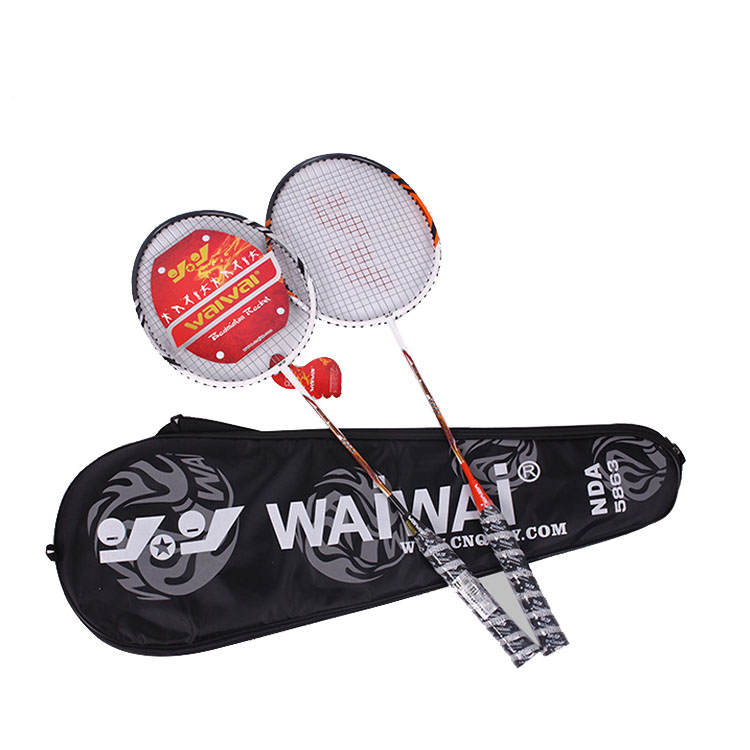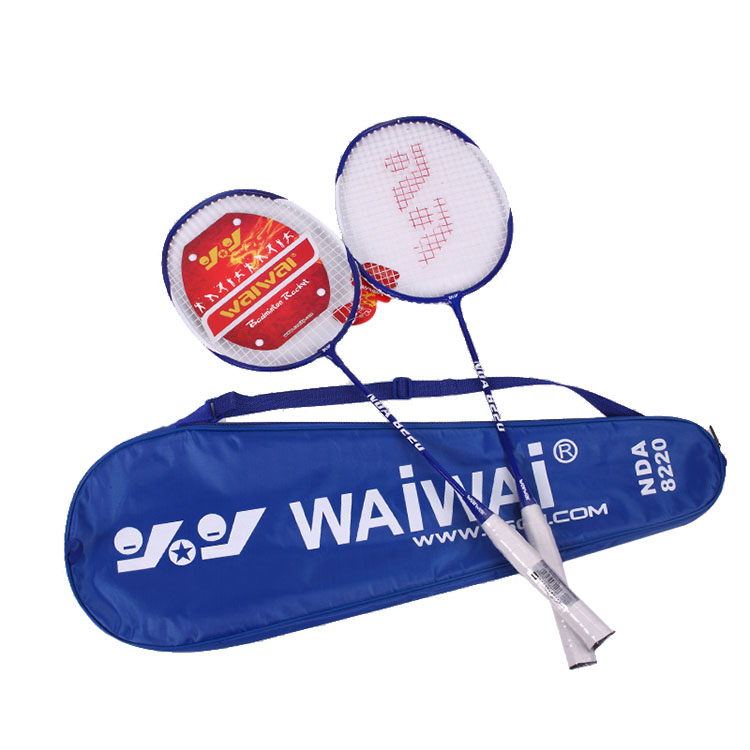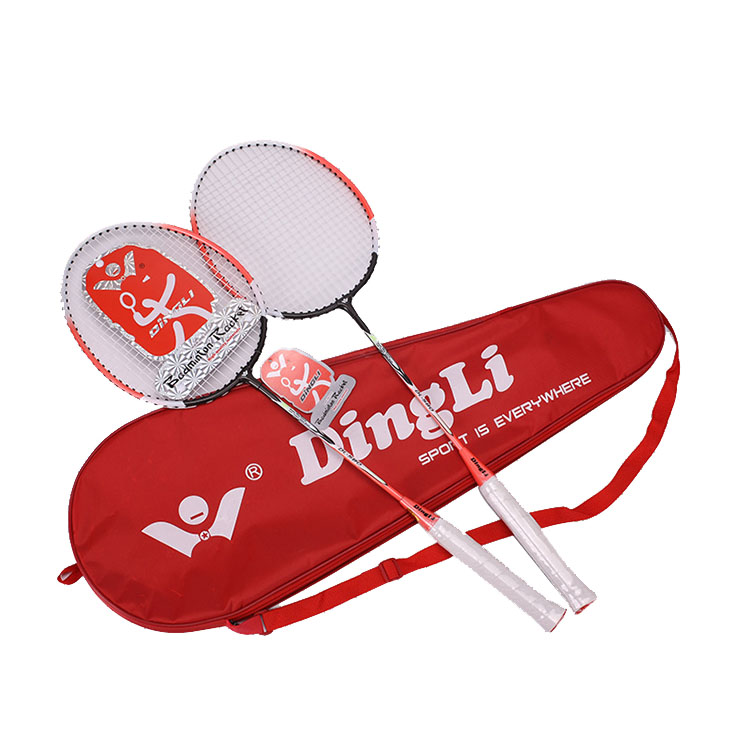Badminton racket torque
It refers to the magnitude of the twist on the surface of the racket when the racket hits the ball. The smaller the racket’s torque, the better the control of the ball.
Racket weight
Every racket should be marked with its weight. Generally, the common marking method is U, 2U, 3U, 4U. Generally, the weight of a full-carbon badminton racket is mostly 2U (90-94g) or 3U (85-89g), 4U (80-84g), and the weight of an aluminum-framed badminton racket is generally above U (95-99g) There are also a few full-carbon badminton rackets that weigh as low as 80 grams.
balance point
If the balance point of the racket is closer to the head, it is called “head weight”; if the balance point of the racket is closer to the handle, it is called “head light”. The general balance point is measured upwards from the bottom of the racket, measured in centimeters and inches. It is more suitable for defensive control players and players who pursue speed, because the continuous swing speed of this racket will be much faster. With the advancement of technology, many new rackets through precise control of the production process, without using balancers can make the same model of finished rackets have the same balance point, which is also the basic requirement of high-quality badminton rackets.
Racket length
The length of the standard badminton racket (plus the base) is 675 mm, and there are also 680 mm long. There are generally three specifications for the length of the racket: 185MM, 190MM, 195MM. The advantage of an extended badminton racket is to improve the hitting point and increase the flashing of the racket, but the extended badminton racket will cause more wrists than ordinary badminton rackets. And the possibility of injury to the arm, and the flexibility of the badminton racket is also reduced, which is not conducive to handling the close-fitting ball.
Frame
The third type of semi-circular cross-section is the design of the transition from aluminum frame to full-carbon badminton racket. Its cross-sectional shape is basically the same as that of an aluminum framed racket, and the process is relatively easy to manufacture.
The box-shaped section can better control the ball. With the development of material technology, badminton rackets with thinner box-shaped cross-sections are used more than high-end rackets. The purpose is to strive for faster hitting speed and better return control performance.
Racket joint
The joints of the finger frame and the rod are T-shaped and Y-shaped in appearance, and internal and external in terms of craftsmanship.
The all-carbon badminton rackets used are all integrated in appearance (the joints are not visible), but in fact, most of them use built-in joints. Only a few racquets use jointless technology. The disadvantage of no joints is the racket. The torque is poor. The racket frame and the racket shaft are made separately and then connected by a joint, which is conducive to better control of the quality, weight and balance of the racket. The external joints are good in strength and torsion.

Yangzhou qiangjin sports products co.,ltd. founded in 1992, located in the historical and cultural city Jiangdu east suburb of Yangzhou, near the Beijing-Shanghai highway and the airport of Jiangsu Central. The company is a sports safety goods, badminton rackets, tennis racket design, development, manufacturing, service as one of the modern enterprise. Now covers an area of 18,000 square meters, construction area of 9000 square meters, has advanced production and testing equipment 300 sets. More than 300 employees, including 20 designers, technicians, more than 30 people, 10 people have senior professional titles. Company passed the ISO9001 quality management certification in 2004, the products all passed the quality supervision department, was awarded the famous brand of Jiangsu, well-known trade marks of Yangzhou and so on.
Our racket head is traditionally round. The sweet zone of the racket is the best hitting zone on the surface of the racket. The sweet zone of the racket is near the fourth line of the horizontal line. When the hitting point is in the sweet spot, it can give you enough hitting power, ball control, and little vibration. Each racket is marked with its weight. Most of our full-carbon badminton rackets weigh 85-89 grams, while the weight of aluminum-framed badminton rackets is generally above 95-100 grams. Generally, the balance point of a racket is measured upwards from the bottom of the racket, measured in centimeters and inches. The balance point of our racket is 280-290mm, which is more suitable for defensive control players and players who pursue speed, because the continuous swing speed of this racket will be much faster. With the advancement of technology, many new rackets through precise control of the production process, without using balancers, can make the same model of finished rackets have the same balance point, which is also the basic requirement of high-quality badminton rackets. The length of a standard badminton racket (plus the base) is 675 mm, and our racket is 680 mm long. There are generally three specifications for the length of the racket: 185MM, 190MM, 195MM. The advantage of an extended badminton racket is to improve the hitting point and increase the flashing of the racket, but the extended badminton racket will cause more wrists than ordinary badminton rackets. And the possibility of injury to the arm, and the flexibility of the badminton racket is also reduced, which is not conducive to handling the close-fitting ball. The joints of the all-carbon badminton racket are all integrated in appearance, but in fact, most of them use built-in joints. The frame and the shaft are made separately and then connected by joints, which is conducive to better control of the quality of the racket. Weight and balance point. When the factory first started making rackets, aluminum alloys were used, but now most of them use new materials, such as carbon fiber, titanium alloy, and high-strength carbon fiber. These new materials are lighter, stronger, and more durable, and absorb more vibration and shock. At the same time, racket manufacturers have more room for the design of racket hardness, ball feel, and hitting performance.
Post time: Jun-09-2021


